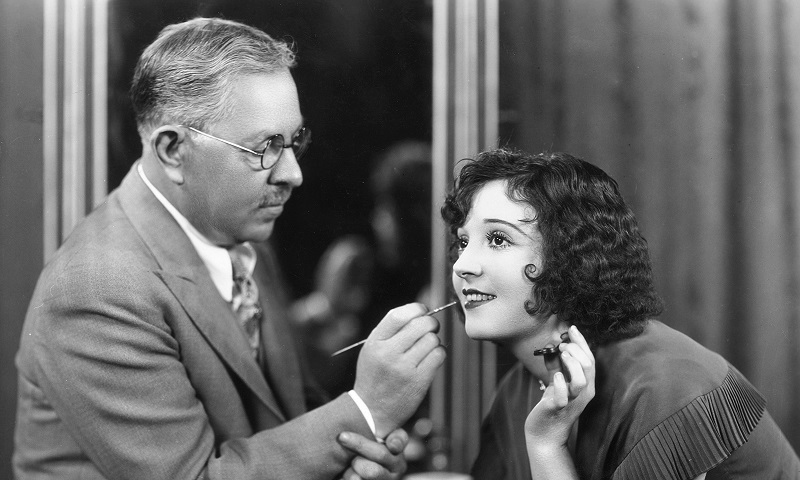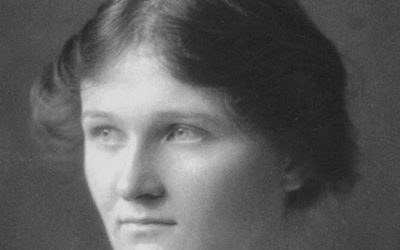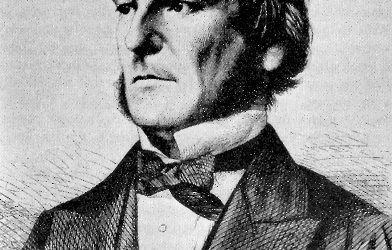Among the many fictional characters who rub shoulders with real historical figures in the pages of E.L. Doctorow’s 1975 novel Ragtime, one who stands out as particularly heroic is Tateh, a Latvian Jew who immigrates to the United States in search of a better life for himself and his young daughter. Artistically gifted, but poor and with no connections, he manages to make a meager living selling paper silhouettes in the street, until one day a passerby notices him working on a flipbook of silhouettes and offers to buy it for a high price. Although Tateh had made the book as a gift for his daughter, he agrees to sell it to the stranger and uses the profits to buy materials for more flipbooks. This business proves enormously successful and leads him to further innovations, until eventually he becomes a pioneering animator and director as well as one of the richest characters in the story.
In many ways Tateh comes across as a composite of many different immigrants’ experiences in America, yet whether by chance or intention his story also bears a strong similarity to one famous immigrant’s life in particular. Like Tateh, this man was a Jew from Eastern Europe who came to the U.S. hoping to find a better life; like Tateh, he struggled to provide for his young family and suffered repeated financial setbacks; and, like Tateh, his success was the result of a critical contribution to the motion picture industry that brought him wealth and prominence beyond his wildest dreams. This real-life protagonist of today’s story is the cosmetician Maksymilian Faktorowicz, better known to the world as Max Factor.
Factor was born on September 15, 1877 in the town of Zduńska Wola, near Lodz in central Poland. His father’s occupation is not precisely known, but what is certain is that he was a poor man who could not afford formal education for any of his children. Instead, like most boys of his time, Factor was apprenticed at an early age, first to a dentist and pharmacist and then to a wig-maker and cosmetician. He proved to have a knack for working with cosmetics, and by the age of 14 he had gone to Moscow to work for a leading makeup artist whose clients included the Tzar’s own opera company. After four years of this work, followed by a compulsory four-year term in the Russian army as a nurse, he finally felt prepared to open a shop of his own in the city of Ryazan.
From this point on Factor’s career looked like it could go nowhere but up. His shop was successful, and the quality of his cosmetics was so widely respected that within a few years he was appointed official cosmetician to the royal family itself. But there were dark clouds on the horizon. Factor could never forget, even in his moment of triumph, that he was a Polish Jew in a country that seethed with bitter and widespread anti-Semitism. This traditional race hatred expressed itself publicly through occasional pogroms in which Jews would have their homes and property destroyed by angry mobs, who at the same time assaulted them in the streets and even murdered them with no fear of prosecution. In 1903 and 1904 a series of particularly violent riots had shaken Factor deeply and convinced him that, despite the success he had built up in Russia, in the long run it held nothing for him but misery. Following the example of his brother and uncle, who had emigrated several years before, he decided to move with his young family to St. Louis.
Factor landed in the U.S. with a fair amount of money saved from his successful cosmetics business, but circumstances soon conspired to take it away from him. Factor spoke almost no English, leaving him dependent on associates to make business deals on his behalf. Even after he acquired a rudimentary grasp on the language, he spoke with a thick Eastern European accent that made it easy for any con artist to identify him as an easy mark. He discovered the truth of this for himself at the 1904 World’s Fair, when after doing a brisk business for several days he realized that the “business partner” who had found him a space at the exhibition had also cut and run with all of his profits. At a loose end, he turned to his American relatives, who loaned him the money to start a barbershop in St. Louis.
However, Factor had no intention of spending the rest of his life cutting hair. In 1909 he moved to Los Angeles, California to resume his original career, making wigs and cosmetics for actors, but now it would be for the budding motion picture industry instead of theater. And movie actors needed the help, because at the time there was no makeup in use that could deal with the unique challenges of film. Traditional theater greasepaint, which was the standard both on stage and in front of the camera, would crack and flake off as actors moved their faces; this was never a problem when the audience was twenty feet away, but a movie close-up would reveal every imperfection. Actors would often whip up their own homemade concoctions to give their faces a more natural appearance on camera, but nothing worked well enough to become the new standard.
His first innovation was a more flexible form of greasepaint that could stretch with the actor’s face. This quickly became popular with film actors, who felt that the new makeup allowed them to put their talents to full use. Within a few years, Factor was being consulted by directors for help with a multitude of tricky visual problems, like designing false eyelashes to draw more attention to an actress’s eyes, or creating fake sweat to make an actor’s athletic stunts look real on screen. And when films started to be made in color, making all of his old black-and-white makeup obsolete, he responded by producing what is still his company’s most famous product: the lightweight, natural-looking foundation he called Pan-Cake.
Factor’s glamorous products didn’t take long to leap from the screen to the marketplace. As early as 1916 he began marketing eye shadow and eyebrow pencils to the general public, breaking the precedent of selling these products only to actors. By the early 1920s he was selling a full range of professional-grade cosmetics across the country, promising that anyone who put the time and effort in could look like a movie star. His pioneering Pan-Cake foundation was a fixture not merely on Hollywood sets, but also on dressing tables all over the United States; a few years after its launch, a survey estimated that nearly a third of American women used it. In a sense, the whole phenomenon of mainstream fashion adopting the unique looks of famous actors, from Joan Crawford’s lips in the 1930s to the “Rachel” haircut in the 1990s, stems from Factor’s unique approach to marketing.
Just like many of the protagonists in the films he helped bring to life, Max Factor was a man who hitched his wagon to a star. Even when he struggled to make ends meet, his mind was never far from the world of drama that he had observed from behind the curtain for practically his entire life. The unique looks which he devised for some of Hollywood’s biggest stars showed the world that true glamour has as much to do with taste as it does with natural endowments. With his line of cosmetics he hoped to prove that any woman could look beautiful, just as his own life story demonstrates that anyone, from any background, can be successful.
Next Post: Irma S. Rombauer, who responded to the stress and financial concerns that followed her husband’s suicide by penning one of the most popular cookbooks of the 20th century, The Joy of Cooking.














